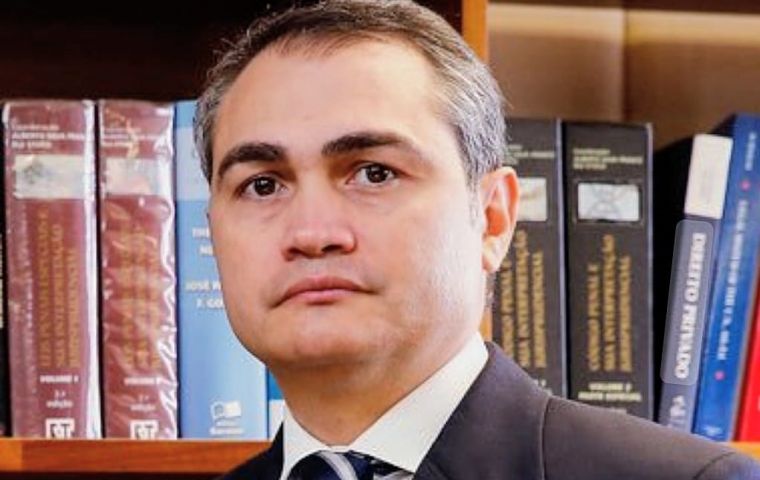MercoPress. South Atlantic News Agency
Third-largest ever outflow of dollars recorded in Brazil
 Sidney predicted that the Selic basic interest rate would rise to 15% until June to then go downwards
Sidney predicted that the Selic basic interest rate would rise to 15% until June to then go downwards A total of US$ 15.918 billion fled Brazil in 2024, which represented the third-largest annual leakage ever behind consecutive negative balances in 2019 (US$ 44.768 billion) and 2020 (US$ 27.923 billion), the Central Bank (BCB) reported this week. Last year's financial flow was negative by US$84.396 billion after outflows (US$ 674.385 billion) outpaced inflows (US$ 589.989 billion).
On the other hand, Brazil posted a positive foreign trade balance after exports worth US$298.456 billion exceeded US$229.978 billion in imports. The Central Bank released preliminary data accounting for the period between Jan. 1 and Dec. 27 while definitive results for 2024 will be available by Jan. 8, it was announced. In addition, the 2024 financial flow featured US$ 589.989 billion in purchases and US$ 674.385 billion in sales.
The US dollar rose 27.35% against the real, particularly in November with the government's fiscal package as investors deemed the proposed spending cuts insufficient, in addition to rejecting the initiative to widen the income tax exemption bracket.
On Dec. 18, the US currency closed at R$ 6.26, its all-time high face value amid fiscal risk and the expectation of a slowdown in interest rate cuts by the United States Federal Reserve (Fed). The BCB poured over US$ 32 billion into the market to contain the rise.
In this scenario, the Brazilian Federation of Banks (Febraban) predicted inflation would fall this year. Febraban President Isaac Sidney foresaw yearly adjustments of around 3% at a time when 2024's final data is yet to be released. The market has already pegged the rate at 4.9%, equivalent to 0.4 percentage points above the target ceiling of 4.5%, due to the more restrictive monetary policy adopted by the BCB, Sidney explained. He also predicted the Selic basic interest rate would rise to 15% until June to then go downwards.
“To the extent that the Central Bank got ahead of itself and ended up setting a stronger, more contractionary pace, this should make inflation start to converge towards the target, although we still have a more critical inflation picture,” Sidney told GloboNews.
The Selic rate is currently at 12.25% and should be raised by another percentage point at the next meeting of the Monetary Policy Committee (Copom), scheduled for January 28th and 29th. The projection of interest rates at 15% was determined by a Febraban survey last month among 19 financial institutions.
The BCB's new president Gabriel Galípolo has repeatedly pledged to bring inflation as close as possible to the 3% target while keeping interest rates higher for as long as necessary. He took office on Wednesday and had his first working day on Thursday, with the dollar soaring at the start of the trading session to R$ 6.22 but falling back later in the day to R$ 6.16.
“The government is doing its part by sending this package, Congress is doing the same, and we need to continue giving the government a vote of confidence to pursue and persevere in bringing this debt and spending trajectory towards a process of stabilization and fiscal balance,” Sidney noted.
“We can't dismiss these additional measures that have been taken, which will certainly have some impact on the trajectory of the public debt. What we need to do is move forward, reach our destination, and reverse the upward trajectory,” he also pointed out..
Sidney also reckoned that Finance Minister Fernando Haddad was aware of the distrust among investors amid a deterioration in fiscal and monetary expectations.




Top Comments
Disclaimer & comment rulesCommenting for this story is now closed.
If you have a Facebook account, become a fan and comment on our Facebook Page!